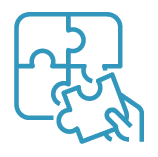To become skilled readers, children must have strong base in phonics. Phonics helps students to quickly sound out a word. After enough practice, reading sounds becomes automatic.
By 3rd grade, children are expected to read grade level text about 90% accurately, meaning if students are stumbling over sounding out words then they will be unable to remember the meaning of the story. Phonics at this grade becomes very sophisticated, sometimes called “Word Study”, and involves sounding out long words (opponent, advantage), identifying silent letters, and learning complex spelling patterns (moisture, creature, fixture) to help improve their writing.

The ultimate goal is that your child will be able to read words or sound them out quickly and automatically. In 3rd grade children are expected to read longer, more complex words and words that are not spelled how they sound.

Often parents fall into the thinking: “The school will teach my child everything they need to know! I’ll leave it to them.” Although it may feel better to not carry this burden, the burden will be shifted onto your child. Teachers need you on their team. They need your help practicing reading at home, building your child’s confidence in their work and giving them the much needed practice all kids require to be strong readers. They also need you to speak up when you see your child falling behind.
Give your child a “root” or base word, like do
Now see how many ways your child can add a prefix or suffix to create a new
word. For example: undo, redo, doing, doable, and done.
Prefixes are sets of letters that are added to the beginning of a word. A suffix is added to the end.
If your child has a hard time reading long, unfamiliar words, show them how to cover up part of the word to break it into smaller chunks. For example, the word “cabinet”. Cover up the “cabi” part so they can first read “net”. Then cover up “net” so they can read “cab-i”. Now put the sounds together.
Remember, we want children to develop a love of reading, so focus on finding books they want to read.
Children need a lot of practice reading to reinforce phonics skills, so make a point to listen to them read every day and offer them corrective feedback when you hear them stumble.
For example:
“I noticed you weren’t sure how to read “enable”. Let’s break it up into chunks en/able. Do you know what “able” means? It means you have the skill or power to do something. You are able to roller skate. Now if we add “en” it means to allow or give help to do something. Using roller skates enables you to get to the park really quickly! Can you use the word enable in a sentence?

Use phonics games to help build kids’ “decoding” or sounding out skills. This will make your child a stronger and faster reader.
ABCya.com Spelling Bees Practice
ABCya.com Spelling with Vowels

Home Reading Helper is a resource for parents to elevate children’s reading at home provided by Read Charlotte.